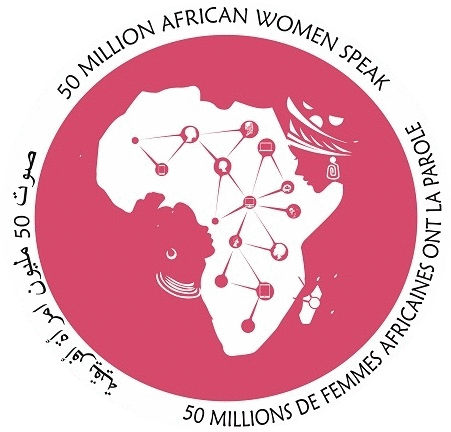Most Common Forms of Intellectual Property (IP) - Uganda
- Uganda
- Resources
- Business Services
- Patenting Services
- Patenting Services
Patent application steps
Registration steps and procedures for Patenting; trademarks; intellectual property; copy right; model utility and other related inventions, see the information guide [pages 5-8]
Forms
Intellectual property, Trademark, and Copyright
Fees
Contacts for the Uganda Registration Services Bureaus (URSB):
- Headquarters
Plot 5 George Street, Georgian House,
P.O. Box 6848 Kampala Uganda
Phone: +256 414 233 219
Call center +256 417 338 100
Whatsapp: +256 712 448 448
Toll free: 0800 100 006
Email: ursb@ursb.go.ug
Web: www.ursb.go.ug
- Branches
- Kampala
- Posta Uganda Main office, Kampala Road Booth 1, 2, 3 & 5
- Uganda Investment Authority Offices (UIA), Twed Plaza (1st Floor) Lumumba Avenue (One Stop Centre).
- Nakivubo Mews – Sekaziga House Floor 1, Nakivubo mews.
- Eastern Uganda Regional Office: Mbale
Ministry of Justice and Constitutional Affairs
Plot 3, Park Crescent,
- Western Uganda Regional Office: Mbarara
Ministry of Justice and Constitutional Affairs
Plot 1, Kamukuzi Hill,
- Northern Uganda Regional Office: Gulu
Ministry of Justice and Constitutional Affairs
Plot 6B Princess Road,
- West Nile Regional Office: Arua –
Ministry of Justice and Constitutional Affairs
Plot 42/44 Packwach road,
3. Through over 40 municipalities at the offices of the Ministry of Local Government/URA,
4. Two fully equipped mobile vans that handle registrations in hard to reach areas.
Contact URSB for free at 0800 100 006 to find out when the mobile vans will be in your area.
Patenting Services in Uganda
Definition
The World Intellectual Property Organisation (WIPO) defines Intellectual Property (IP) as creations of the mind, such as inventions; literary and artistic works; designs; and symbols, names and images used in commerce.
Uganda has also ratified and is a signatory of both regional and international Intellectual Property instruments in order to harmonize enforcement with the systems of other jurisdictions. Uganda is a member of African Regional intellectual Property Organisation (ARIPO), the World Intellectual Property Organisation (WIPO), as well as World Trade Organisation (WTO).
There are 2 categories of Intellectual Property (IP)
- Copyright and Neighbouring Rights - literary and artistic works such as novels, poems and plays, movies, musical works, photographs, architectural designs, computer programmes and electronic databases
- Industrial Property - inventions (patents), trademarks, industrial designs, and geographic indications
Intellectual Property rights grant one exclusive rights to exploit and benefit from one's creation.
Importance of protection of intellectual property
- innovators are able to benefit from their work
- legal protection of inventions encourages further spending on innovations
- further spending leads to economic growth by creating jobs thus improving livelihoods.
You can file for IP Protection through;
- National - Uganda Registration Services Bureau (URSB), the national IP office
- Regional - African Regional Intellectual Property Organisation (ARIPO)
- International - World Intellectual Property Organisation (WIPO)
Note:
- The term of protection for a patent in Uganda in 20 years, and to remain in force, a patent holder is required to pay annual maintenance fees.
- The term of protection for a utility model is 10 years.
Most Common Forms of Intellectual Property (IP)
- Copyright - Copyright law grants authors, artists and other creators’ protection or their literary and artistic creations - generally referred to as 'works'.
Copyright - literary and artistic works (novels, poems, plays, newspapers, adverts, films, musical compositions, choreography, paintings, drawings, photographs, sculptures, architecture, maps, technical drawings, computer software, programmes, and databases)
Neighbouring Rights - works of performing artists, producers, and those involved in broadcasting, or works derived from existing works - Trademark - This is a distinctive sign that differentiates goods/services produced by individuals/organisations from others. It may consist of any word, symbol, design, slogan, logo, sound, smell, colour, label, name, signature, letter, numeral or any combination of them. It should also be distinctive, non-descriptive, likely not to cause confusion as well as capable of being represented geographically.
The Trademark owner has the exclusive right to prevent other from using the same/confusingly similar mark. - Patent - This is an exclusive right granted for an invention, either a product/process, that provides a new way of doing something/new technical solution to a problem. The invention must be new, non-obvious to a person not skilled in that field and useful. It gives the owner the right to prevent others from using the invention for 20 years.
- Utility Model - Similar to a Patent, it is granted for a new technical solution to a problem, or a product/process that is new and industrially applicable. It protects innovations for 10 years and has fewer requirements than a Patent.
- Industrial Design - This relates to the appearance of a product and aspects that can be seen/felt - ornamental or aesthetic. It must be a new and original design that may consist of 3-dimensional features (shape/surface) or 2-dimensional (patterns, lines or colour). Protection lasts 5 years and can be renewed for 2 or more consecutive 5 year terms.
- Geographical Indication - This is a sign that identifies goods as originating from a particular country, region or locality. In this instance, a given quality, reputation, characteristic is attributable to that region. This can be used as a tool to market goods that have special characteristics due to their region.





